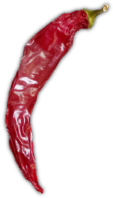Celebrated by approximately 20% of the world’s inhabitants, Chinese New Year is just around the corner!
This year is the Year of the Rat, with the rat traditionally seen as a sign of wealth and surplus – and Chinese New Year is always a good reason to indulge in one of the UK’s favourite cuisines, Chinese!
Chinese is the third most popular cuisine in the UK when eating out, with 69% of consumers surveyed for the Future of Oriental Food report saying they order Chinese out of the home – whilst Chinese is also the number-one takeaway/delivery option (60%), ahead of Indian (45%) and British (33%). (Foodspark, March 2019)
Authenticity is also important to 84% of consumers when eating oriental food. According to the survey respondents, the key factors necessary for establishing confidence is this area include the variety of dishes (42%), a chef from the same country as the cuisine (42%) and staff from the same country as the cuisine (35%). (Ibid)
So with that in mind, what is the most authentic way to celebrate Chinese New Year?
Preparations for Chinese New Year officially begins on January 17th 2020 (although this date changes year to year), before the New Year officially begins on January 25th 2020, before further preparations begin on 5th February 2020 for the Lantern Festival, which is then held on February 8th 2020. It’s the longest holiday in China, with a whopping 15 days given over to festivities and many shops being shut at this time of year.
Family is a major basis of Chinese society, so a lot of significance is placed on the family meals of New Year’s Eve dinner or Reunion dinner, where all family members come back home to attend the meal and to spend the holiday with their family. The flux of people returning home is called the Spring Migration, and normally sees people literally fighting for train and plane tickets home- in 2015, statistics showed that around 1,000 tickets were sold every second! If a member of the family cannot return home, the rest of the family will leave their spot at the table empty and place a spare set of utensils for them.
Food is integral to Chinese culture, and for the most important holiday of the year a lot of care and preparation comes as standard. Each dish, side dish and dessert are specially created to give symbolic blessings for the next year – and though every region and family have different customs, here is just a snapshot of the common dishes seen on every table:
- Spring rolls: This side dish is pretty recognisable to a UK audience, especially with the popularity of Chinese restaurants and take aways. Spring roll skins are made of flour, water and some salt, with the filling depending on your personal taste. Traditionally, the filling is made of pork, Chinese cabbage, shiitake, carrots and seasoning; but there are also Shangainese style red bean paste spring rolls and even ice cream fillings, set to satisfy any sweet tooth!
- Dumplings: Another recognisable element to any Chinese New Year feast is the ever adaptable dumpling! There are too many different types of filling to count, although traditionally they include Chinese cabbage, green onion, pork and shrimp. In the Suzhou province, they also include egg to symbolise gold and wealth in the new year. Meat and bamboo strip filling is also used to symbolise abundance in the new year. Similar to traditional Christmas pudding baking, some families will also place a coin in a random dumpling, so that whoever finds it will have a prosperous year.
- Noodles: The ever humble noodle is the base of any good Chinese dinner, and at New Year they also take on a symbolic role. The New Year Dinner normally includes “longevity noodles”, which are long noodles that shouldn’t cut or even chew – tradition states that the longer the noodle, the longer your life will be, so slurping is definitely allowed! Noodles are also also eaten at this time of year with a vast variety of sides and ingredients which have symbolic meanings, such as: eggs (foretelling a large and healthy family); lobster (endless money for the next year); shrimp (fortune and wealth); roasted pig (peace); duck (loyalty); peaches (longevity); and tofu (happiness and fortune for the whole family).
- Fish: Another must for the Chinese New Year feast, fish symbolises surplus and wealth in China. Half of the fish is normally eaten for dinner, and the second half is eaten the next day – this is to prolong the surplus and make the future prosperous as well; whilst a whole fish represents a harmonious and whole family when sitting down to the New Year feast. In Hunan, a mountainous province in southern China, red peppers are added after broiling the fish. Red is a festive and lucky color and the spicy hotness expresses wishes for a thriving business in the new year.
- New Year Cake: Nian gao, also known as “rice cake” or “New Year cake” in English, are a must for anyone with a sweet tooth at Chinese New Year. The “gao” in nian gao is a homophone of 高 (gāo – tall/high), so eating these cakes is seen as a wish to be successful and “higher” each year. This dessert is either made of sticky glutinous rice or yellow rice, and can represent gold and silver bricks or bars representing hope for success in the new year. As the years have gone on, there are a myriad of recipe variations depending on province and family. Southern nian gao are usually stir-fried with meat and vegetables for a savory dish, whilst they are made as desserts elsewhere.
With consumer desire for authenticity and to travel the world from their kitchen, the popularity of authentic Chinese cuisine is sure to continue with more emphasis on cultural events like the new year – better make room after all the turkey sharpish!
Give us a call to discuss your international cuisine requirements today! You can contact us:
- By calling 01529 305000.
- Emailing us at enquiries@sleafordqf.com.
- Talking to us on our Live Chat function at sleafordqf.com
We would love to hear from you!



